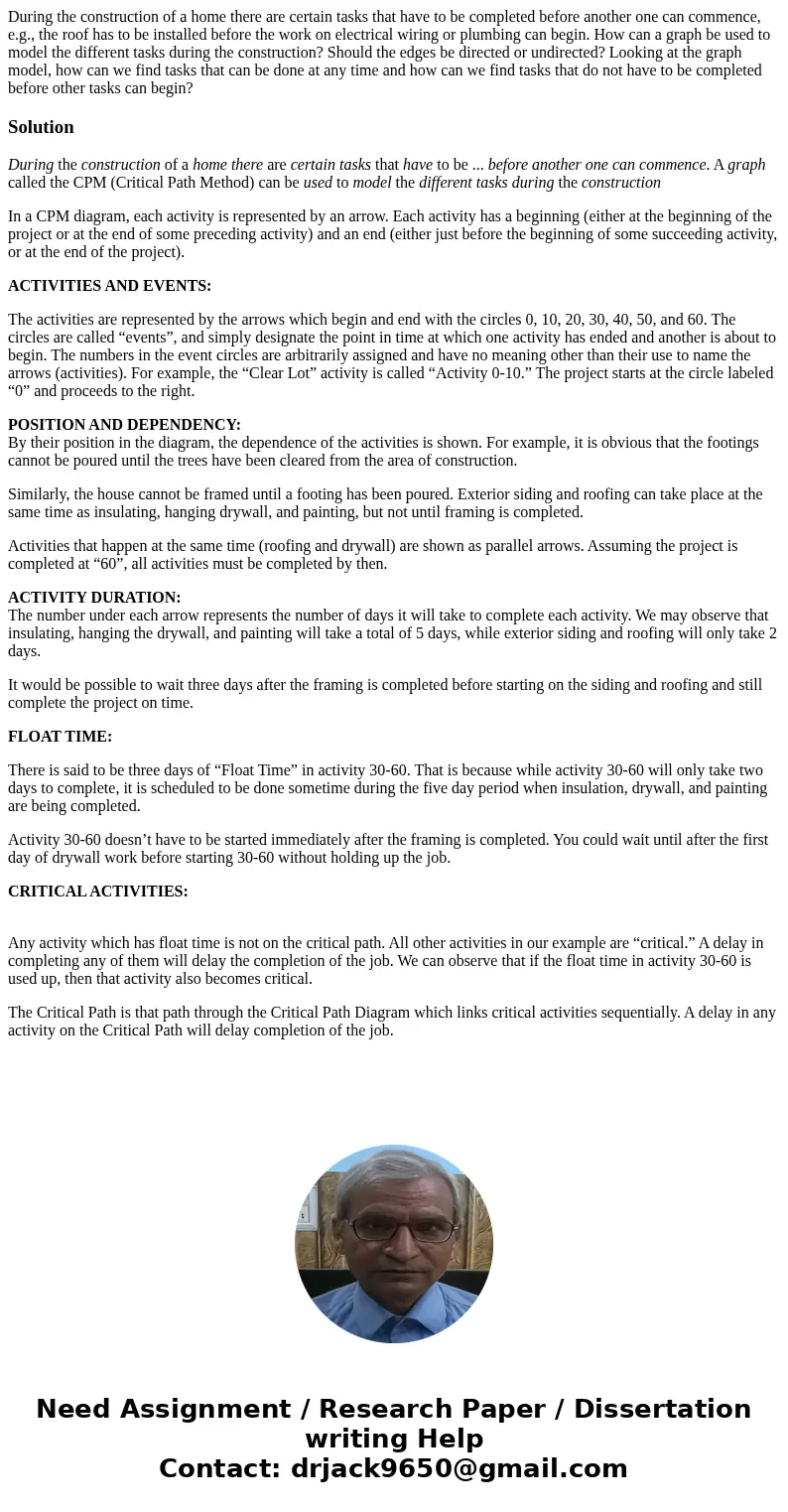During the construction of a home there are certain tasks th
During the construction of a home there are certain tasks that have to be completed before another one can commence, e.g., the roof has to be installed before the work on electrical wiring or plumbing can begin. How can a graph be used to model the different tasks during the construction? Should the edges be directed or undirected? Looking at the graph model, how can we find tasks that can be done at any time and how can we find tasks that do not have to be completed before other tasks can begin?
Solution
During the construction of a home there are certain tasks that have to be ... before another one can commence. A graph called the CPM (Critical Path Method) can be used to model the different tasks during the construction
In a CPM diagram, each activity is represented by an arrow. Each activity has a beginning (either at the beginning of the project or at the end of some preceding activity) and an end (either just before the beginning of some succeeding activity, or at the end of the project).
ACTIVITIES AND EVENTS:
The activities are represented by the arrows which begin and end with the circles 0, 10, 20, 30, 40, 50, and 60. The circles are called “events”, and simply designate the point in time at which one activity has ended and another is about to begin. The numbers in the event circles are arbitrarily assigned and have no meaning other than their use to name the arrows (activities). For example, the “Clear Lot” activity is called “Activity 0-10.” The project starts at the circle labeled “0” and proceeds to the right.
POSITION AND DEPENDENCY:
By their position in the diagram, the dependence of the activities is shown. For example, it is obvious that the footings cannot be poured until the trees have been cleared from the area of construction.
Similarly, the house cannot be framed until a footing has been poured. Exterior siding and roofing can take place at the same time as insulating, hanging drywall, and painting, but not until framing is completed.
Activities that happen at the same time (roofing and drywall) are shown as parallel arrows. Assuming the project is completed at “60”, all activities must be completed by then.
ACTIVITY DURATION:
The number under each arrow represents the number of days it will take to complete each activity. We may observe that insulating, hanging the drywall, and painting will take a total of 5 days, while exterior siding and roofing will only take 2 days.
It would be possible to wait three days after the framing is completed before starting on the siding and roofing and still complete the project on time.
FLOAT TIME:
There is said to be three days of “Float Time” in activity 30-60. That is because while activity 30-60 will only take two days to complete, it is scheduled to be done sometime during the five day period when insulation, drywall, and painting are being completed.
Activity 30-60 doesn’t have to be started immediately after the framing is completed. You could wait until after the first day of drywall work before starting 30-60 without holding up the job.
CRITICAL ACTIVITIES:
Any activity which has float time is not on the critical path. All other activities in our example are “critical.” A delay in completing any of them will delay the completion of the job. We can observe that if the float time in activity 30-60 is used up, then that activity also becomes critical.
The Critical Path is that path through the Critical Path Diagram which links critical activities sequentially. A delay in any activity on the Critical Path will delay completion of the job.

 Homework Sourse
Homework Sourse